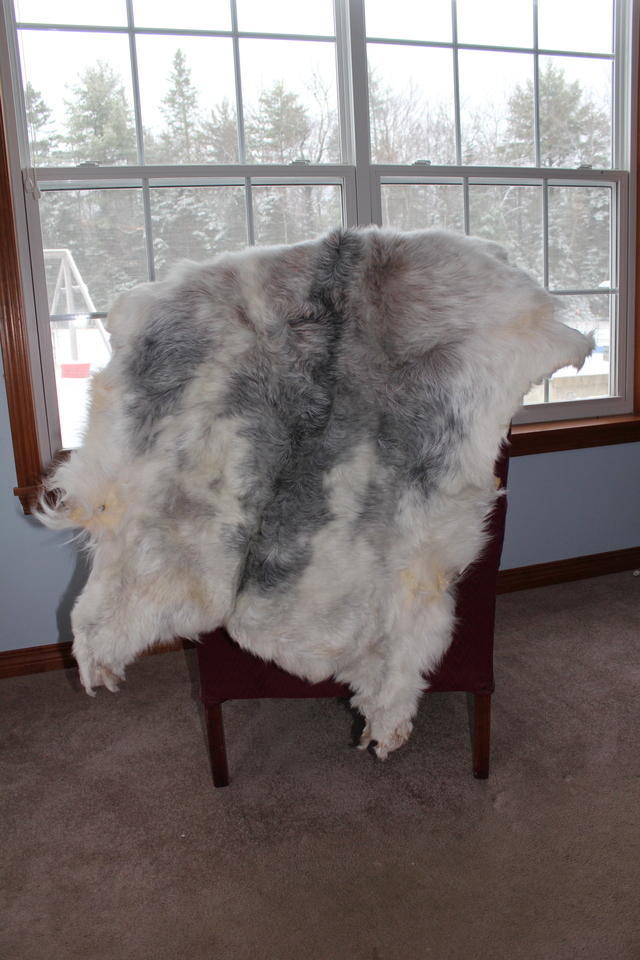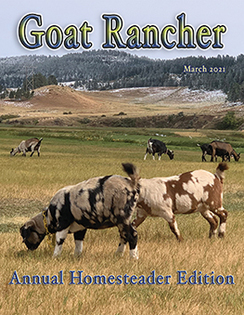Making the Most of Everything our Goats Have to Offer
Monday, March 1, 2021
Rather than jump right into today’s topic, I’m going to offer up a quick update on how 2020 shaped up for the Crise Crew and how we’ve turned the corner into 2021. My dad, Josh, has always worked from home. With Covid, however, he’s had a little more time available and mandatory vacation time off to reduce company liability … yada, yada, yada. More time off for dad means more projects he conjures up and we get dragged into. My mom, Kathy, is a faculty instructor in the Computer Technology program at a college about an hour from our Northern Maine home. Back in March of 2020, her entire school went completely online. She continues to be online during this Spring semester. She works from her office at home instead of traveling the two hours back and forth every day to school, allowing her more time to spend with the goats and to come up with projects of her own, usually sea glass related. In August of 2020, I graduated from the University of Maine with my Bachelor’s of Arts in International Affairs. Later in the year, I was promoted to Assistant Bakery Manager at the store I work at. I pick up babysitting on the side, however, even with the full-time job, babysitting, and goat ranching it still leaves more time in my schedule than I had when I was a full-time student. I, too, am left with finding something else to fill the time.
Our breeding stock and meat program are thriving, thankfully, even during these Covid times. With all the free time, and I use all loosely since there is rarely free time on a farm, we looked for other ways and other things to further the goals of our program and make the most out of our time. I am excited to say that we have taught ourselves how to tan our goat hides! In November, we typically take the animals to market which have not sold or do not meet the criteria for breeding stock. Our butcher then saves the hides of our animals. We pick up the meat and bring the hides home as well, beginning the initial processing stages of tanning a pelt or hide immediately.
Now, remember, one of the main goals of our program revolves around the idea of self-sustainability should a world-altering event ever happen. Learning to tan our goat hides has turned out to be an additional way to further this goal. Let’s think for a second. Should the world, as we know it, cease to exist, for whatever reason, there will be a period of time that you could easily, I use this loosely, go down to a department store like Walmart and get warm clothes, blankets, and other similar items off the shelves. I say loosely because, for those of us who live in the “middle of nowhere”, as the Crise Crew does, the nearest store that would have items like these is about 20 miles! After some time you wouldn’t even be able to drive to these places anymore if you could no longer find gas. Then you are left with getting warm of your own volition. I’d say this is where tanned hides come into play. We now have a way to dress from head to toe and keep ourselves warm with soft, fluffy hair should something ever happen. Don’t read too much into this; I am not sure something will ever happen, but I suppose it is better to be prepared and safe than sorry.
While we are running a business that we hope prospers, we also believe that it is very important that our animals live a good life while they are with us, as short or long a time as that may be. In short, it is all about respecting the life of the animal. It is effortless to respect the life of the goat while they are alive. We give them clean water, make sure they get the food and nutrients they need, a shelter, should they need it, and any other necessary things to make their lives as good as they would be in the wild. When they go to the market or become food for our families, it is also important for us to respect them in death. This parallels how indigenous peoples used every bit of the animal as possible. We are working towards the idea of mindful meat consumption, something ultra foodies have begun calling “nose to tail eating.” While you do not eat the hide of the goat, it follows the same idea: use everything the animal has to offer.
These are practices that were employed all around the world at one point and continue in some parts of the world. For some reason, however, for the most part, it is a lost art in the United States, and maybe first world countries in general. This may largely be because of the lost connection we, as a culture, have with our food sources. I believe it is important to honor the life of the animal that gives us nourishment. I maintain that employing the “waste not, want not” theory is a good place to start.
Generally, we find people today buying a solution that tans the hides of their animals. This obviously isn’t how the process was done decades and centuries ago. There have been many different concoctions of natural substances used to tan hides, but none have been as successful and long-standing as the brain tanning method. Interestingly enough, there is enough oil in any animals’ brain to tan its own hide. At this point in time, we use a chemical solution to tan the hides because it is much easier. We have yet to learn how to use the brain tanning method, as our butcher can’t legally give us the brain of our animals, but I suppose that may be the next step in learning to tan our own hides completely sustainably.
Another piece of this has to do with cash flow. We tan all of these hides, but what do we do with them? We sell them! These are handcrafted goat hides that we have put our time and energy into perfecting, so of course, we work to get somewhat of a return on them. Our website has a new page advertising our hides: https://www.marblecreekacres.com/page/8861/genuine-goat-pelts-for-sale. We also display the hides in our farm stand where they can be purchased. It is always interesting to hear what others have to say about these hides. It is my absolute favorite when people comment on the interesting patterns of the hair. This is one of my favorite parts about raising Kikos; they throw so many amazing colors and patterns and they are just as cool after tanning their hides.
COVID-19 has surely brought some interesting times. It is clearly not over, and will likely be talked about for some time. What will they say in the history books? For as much grief as it has caused, it has also caused many people to have more time on their hands. If you’re anything like the Crise Crew, you want to make the most of the time you have in your day. It has been an exciting and rewarding adventure learning how to process and tan our goat hides. These are stimulating times. With newfound time, I can’t wait to see what else we decide to take on!
(Josh and Kathy Crise, and their grown children, Amelia and Kevin, operate Marble Creek Acres in Lee, Maine. For interest in a future year’s Kiko waitlist, questions, or if you have topics you might like to read about in a future Goat Rancher, we can be reached at 207-619-3758, email [email protected] or marblecreekacres.com)



